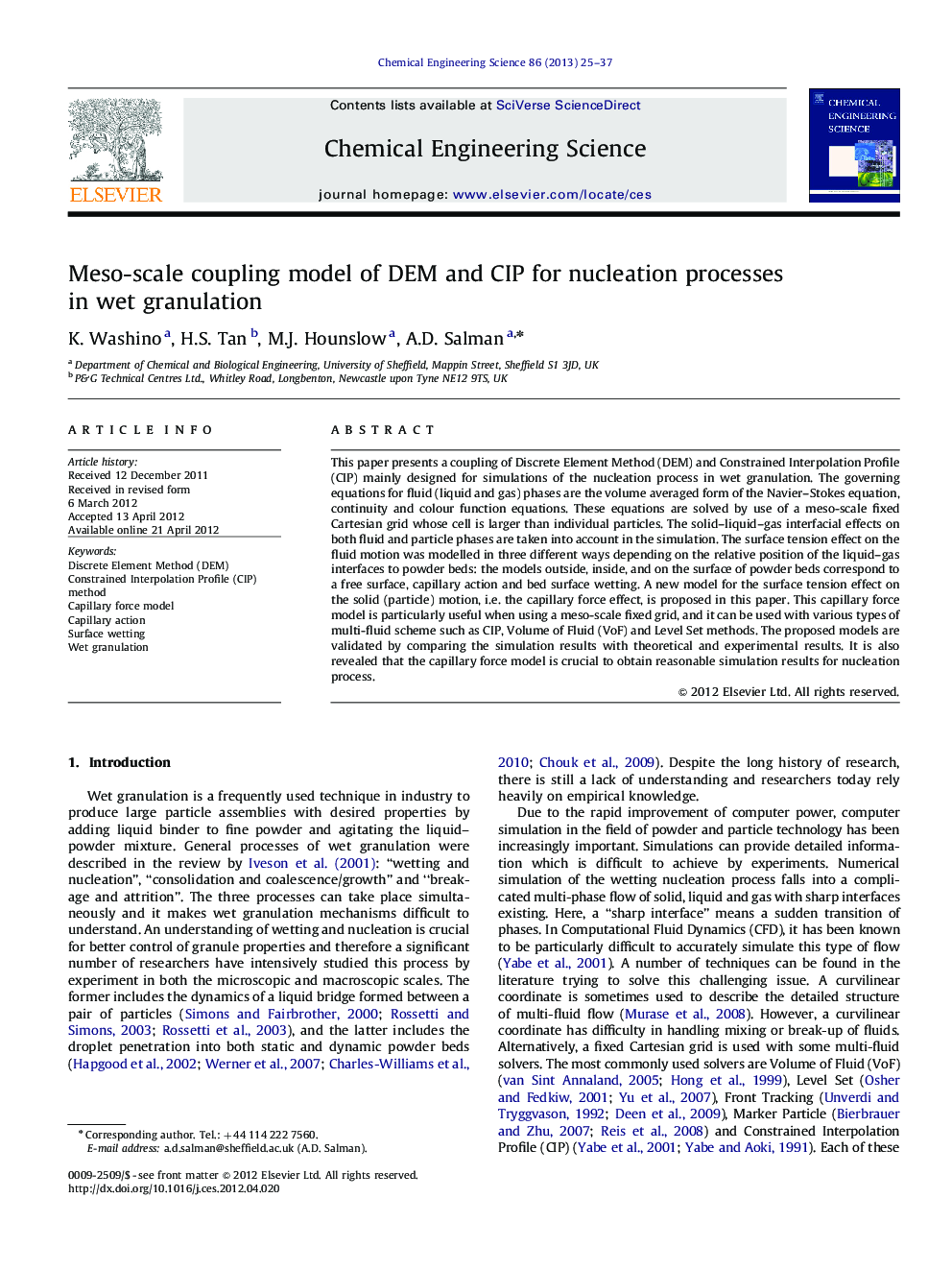| کد مقاله | کد نشریه | سال انتشار | مقاله انگلیسی | نسخه تمام متن |
|---|---|---|---|---|
| 155444 | 456895 | 2013 | 13 صفحه PDF | دانلود رایگان |

This paper presents a coupling of Discrete Element Method (DEM) and Constrained Interpolation Profile (CIP) mainly designed for simulations of the nucleation process in wet granulation. The governing equations for fluid (liquid and gas) phases are the volume averaged form of the Navier–Stokes equation, continuity and colour function equations. These equations are solved by use of a meso-scale fixed Cartesian grid whose cell is larger than individual particles. The solid–liquid–gas interfacial effects on both fluid and particle phases are taken into account in the simulation. The surface tension effect on the fluid motion was modelled in three different ways depending on the relative position of the liquid–gas interfaces to powder beds: the models outside, inside, and on the surface of powder beds correspond to a free surface, capillary action and bed surface wetting. A new model for the surface tension effect on the solid (particle) motion, i.e. the capillary force effect, is proposed in this paper. This capillary force model is particularly useful when using a meso-scale fixed grid, and it can be used with various types of multi-fluid scheme such as CIP, Volume of Fluid (VoF) and Level Set methods. The proposed models are validated by comparing the simulation results with theoretical and experimental results. It is also revealed that the capillary force model is crucial to obtain reasonable simulation results for nucleation process.
► A new model to calculate the capillary force exerted on particles is suggested.
► A new DEM–CFD coupling model for nucleation processes in wet granulation.
► A new method to handle bed surface wetting is proposed in this paper.
► Importance of inclusion of the capillary force for simulations of wet granulation.
Journal: Chemical Engineering Science - Volume 86, 4 February 2013, Pages 25–37